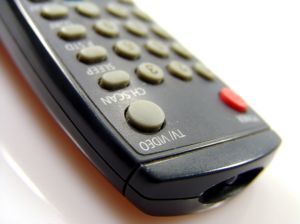The next time you’re perusing your local supermarket’s aisles, think about the items that you’ve just placed into your cart. Did you make a list and select only those items? Or did you toss a few extra products into the buggy? If you said ‘yes’ to the latter question, then it might be a fair assessment to say that some sort of advertisement was involved in your decision. Television commercials are not only crucial to the success of products and services, they are also incredibly entertaining. Understanding how television commercials work isn’t terribly complicated. But the subtleties involved are quite fascinating. There are all sorts of tricks that advertising execs use to capture the attention of consumers. And if you pay careful attention, you can figure out how they’re used to get people to buy all kinds of things…
Advertising Trick #1: Sex
Using sex and sexuality is one of the oldest tricks in the book. But you may be surprised at just frequently it is used in television commercials. Some TV ads which seem completely benign actually have very suggestive undertones. For example, advertisers for NutraGrain breakfast bars have used the slogan “You are what you eat” in order to arouse the attention of consumers who eat unhealthy breakfast foods. But in this particular ad, a woman is shown from behind. The area where her buttocks would normally be seen has been replaced by a pair of large cinnamon rolls. As she walks away, the cinnamon rolls dip and sway with each step, as a man nearby looks on. No one really associates a breakfast food (or NutraGrain) with sex, per se. But the attention drawn to the lady’s buttocks reinforces the notion that if you eat cinnamon rolls for breakfast, they’ll end up padding one’s backside with fat. In 2005 Hardee’s ran an ad featuring socialite Paris Hilton. In the advertisement, she is clad in a revealing swimsuit, soaping up a car while eating one of Hardee’s juicy new burgers. This particular commercial blatantly used sexuality to grab the viewer’s attention. In fact, there was much controversy over the ad, as some people felt that execs went overboard in making their burgers look attractive to consumers. In any event, since sexual urges come naturally to humans, it is still the most widely used ploy in advertisement today; reel them in with sex, then turn attention to the product.
Advertising Trick #2: The Annoying Jingle
It is common knowledge that people are better able to memorize things by using music. This is why pre-schoolers are encouraged to learn their ABCs by singing them. The same concept applies in television advertising. But in this case, ad execs employ all sorts of audible cues to obtain the attention of consumers. But, consumers do not always associate the enjoyable songs they hear in commercials with a particular brand name. In many cases, a viewer may remember the song, and even the imagery in the commercial, but not the actual product being sold. Ironically it is the annoying jingles that are quite effective in getting people to remember a certain product or service. Take for instance, Empire Today, a carpet installation company. In this commercial, the company’s toll free number (800-588-2300) is sung in a reasonably obnoxious jingle. The creative minds behind the commercial are not hoping that you’ll actually enjoy the song; they are hoping that you’ll remember two key items: the phone number, and the company name-both of which make up almost the entire jingle. Other commercials have followed suit. TitleMax, a car title pawn and loan company has employed an actress to repeatedly sing about “the money, the money, the real, moneyyyy” (much to viewers’ chagrin.) And there are plenty of blogs in which consumers rant about how irritating the Head On headache medicine commercials are. The truth is that it is often easier to capture someone’s attention with negative stimuli, as it is with positive. If you recall how annoying a commercial’s jingle is, chances are that you’ll probably remember the product.
Advertising Trick #3: The Absurd
The executives behind the latest commercial for Amica Auto Insurance Company have mastered the art of utilizing completely absurd situations in order to get a point across to consumers. In this television spot, various people are seen climbing into vehicles that are entirely impractical for their personal need: a husband man has bought a tiny car that won’t hold all the members of the his family for a family vacation; a short woman on her way to work is seen climbing with a ladder into a pick-up truck with monster tires; and another man is shown deliverying newspapers from an RV. The platform in this ad is that the same care that people take in choosing their automobiles should be extended to their choice in auto insurance plans. Companies will often use extreme comparisons and analogies when attempting to convince potential customers to buy their goods. The concept is very similar to the usage of metaphors and similes in poetry. Both are used to provide a mental picture for the reader. In the case of television commercials, the analogies are visual instead of literary. It is these absurd visualizations that help consumers to remember what the product is for, and thus will make the decision to buy.
Advertising Trick #4: “Fantasy” Imagery
Have you ever noticed how lush, shiny, and healthy the models’ hair looks in those Pantene Pro-V commercials? Perhaps you’ve taken note of how luxurious the scenery is in commercials for products like Downy fabric softener, or even Glade air freshening products. Since consumers cannot smell through the television, very often, advertisement execs will provide a sort of “fantasy” landscape and/or imagery in order to appeal to viewers’ other senses. Seeing an open field with rows and rows of flowers automatically conveys that the product being offered smells fresh and wonderful. Bottled water companies use ads which focus on cooling and refreshing their customers. Thus, in those ads, lots of crisp water-filled images usually fill up the TV screen. If one can associate a certain product or service with one of his/her senses, more than likely that person will remember the ad. And subliminally, the message is sent that the product being sold can provide results similar to what’s being shown in the commercial.
Advertising Trick #5: The Testimonial
Word of mouth is still the most effective method of advertising. This is because people are more likely to rely on the opinions of their peers where it regards products and services. Advertisers use this concept in the form of the “Testimonial.” In all likelihood, anyone who is privy to watching daytime television has noticed that ads for lawyers and vocational schools are rampant at this particular hour. Training facilities like Everest Institute and Georgia Medical Institute use real students to explain to viewers how much their lives have been enhanced by attending these schools. Other organizations, like the Atlanta law firm of Ken Nugent, P.C., use actors who portray actual clients. By using the “testimonial”, advertisers are hoping that consumers will see the actors and clients as peers whose opinions they can trust.



